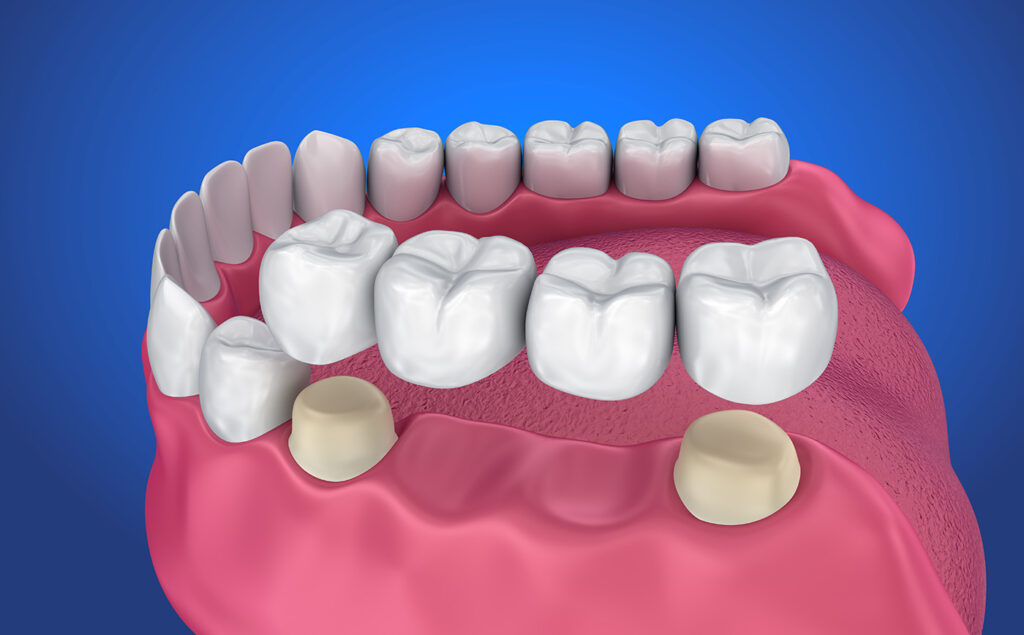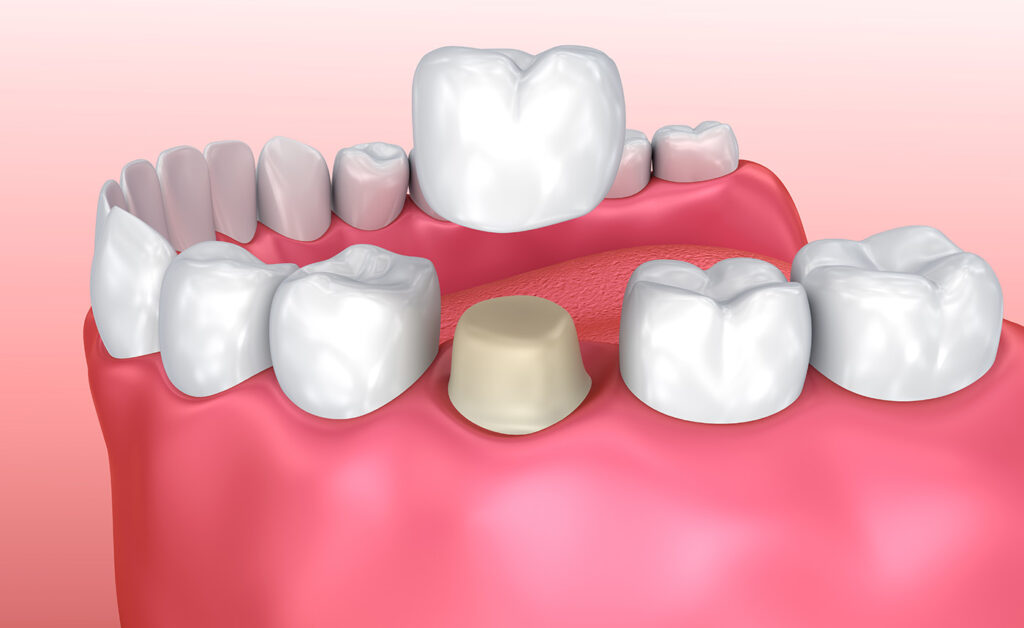
A dental crown, sometimes called a cap, is an artificial tooth that is placed over a natural tooth that has lost a large amount of its supportive structure. The placement of a crown helps to protect the tooth from further cracking, decay, or other damage while restoring the appearance of your smile and your ability to eat and speak properly.
There are several different types of crowns, including full metal, porcelain fused to metal (PFM), porcelain, and zirconium. Each type has its own advantages and disadvantages. For example, metal crowns are highly durable and can withstand a great amount of wear and pressure. However, because they are made from either gold or lesser metal alloys, they have a striking metallic appearance that easily draws attention. Porcelain crowns appear more natural, being similar in color and composition to natural teeth. However, this material is more likely to crack or break under pressure, and are often only used for the front teeth. Zirconium crowns are very strong and are typically used in areas of high wear and are also a natural color, which is why they are being used more frequently in all areas of the mouth.
Dental bridges are a way of replacing missing teeth, secured in place by crowns that are “bridged” or connected together. Dental bridges help to restore proper occlusion and are cosmetically attractive, giving you a full and beautiful smile. Like crowns, they can be made from a variety of materials, each with its own advantages and disadvantages. Your dentist can help determine which material is best for your case during your appointment.

Crowns and bridges are customized to fit with your natural teeth. To make sure they are an exact match, impressions of your teeth will be taken and sent to a dental laboratory, where the shape and shade is made specifically for you. Once a crown is placed, it is cemented into the mouth and is considered a permanent restoration, meaning that it is not removable. With proper care and hygiene, crowns and bridges can last for many years.
